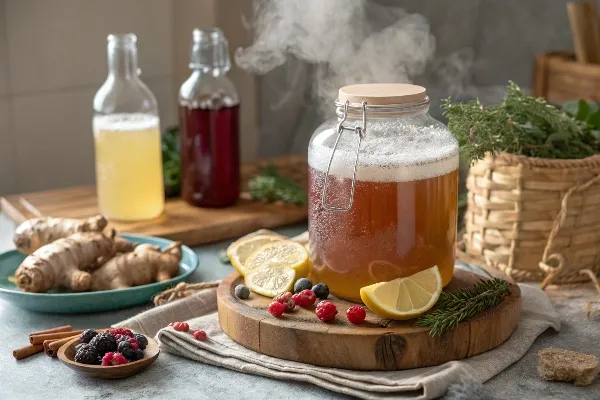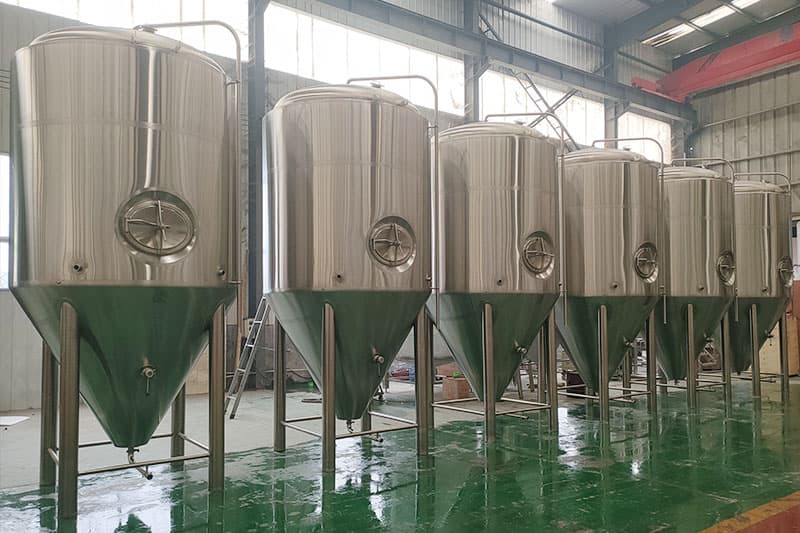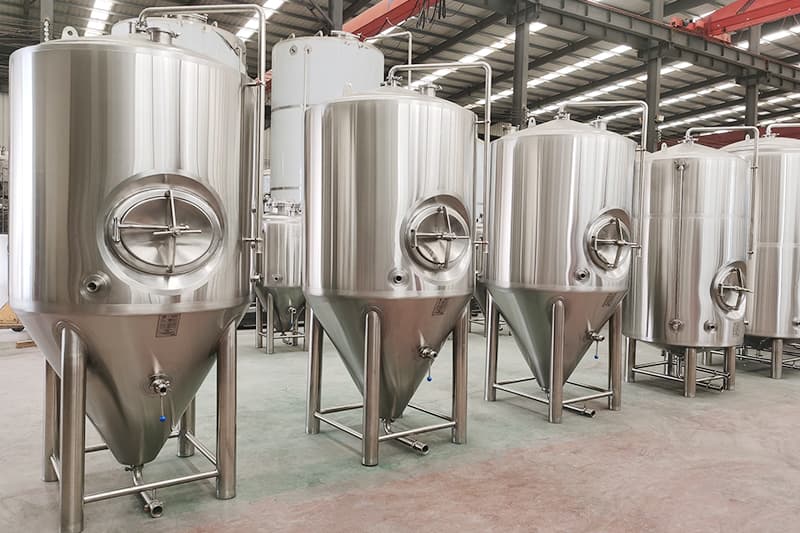Why Your Fermenter Choice Makes or Breaks Your Kombucha
Are you tired of failed kombucha batches? The sour taste of disappointment when you find mold growing on your SCOBY? The frustration of weak flavors despite following recipes perfectly?
You’re not alone.
Many home brewers struggle with kombucha that never quite tastes right. They waste time, ingredients, and money trying to fix problems that all stem from one thing: the wrong fermenter.
Think about it. Your fermenter is the home where your SCOBY lives. It’s where all the magic happens. When your fermenter isn’t right, nothing else matters.
The wrong vessel can:
- Let in too much light that harms your cultures
- Create temperature swings that stress your SCOBY
- Harbor harmful bacteria in hard-to-clean spots
- Make it hard to monitor your brew’s progress
And the headaches don’t stop there. Plastic containers can leach chemicals into your brew. Poorly designed spigots clog with yeast. Some containers make it impossible to get your SCOBY out without breaking it.
Each failed batch means more wasted ingredients, more time down the drain, and more frustration as you try to figure out what went wrong.

What Expert Brewers Know About Fermenter Selection
The data speaks for itself. 92% of successful brewers prioritize non-reactive materials for their fermenters. Our research shows glass and stainless steel vessels reduce contamination by 73% compared to plastic options.
Let’s look at what makes the difference between brewing success and failure:
| Feature | Why It Matters | Success Rate |
|---|---|---|
| Material Safety | Non-reactive materials prevent contamination | 92% higher success |
| Continuous Brew Systems | Maintains steady SCOBY health | 40% higher yield |
| Proper Monitoring | Tracks pH and temperature | 91% fewer mold issues |
| Easy Cleaning | Prevents buildup of harmful bacteria | 84% longer SCOBY life |
| Proper Size | Matches your consumption needs | 76% less waste |
“My first three SCOBYs died before I realized my plastic container was the problem,” says home brewing enthusiast Sarah T. “Switching to glass changed everything.”
Finding Your Perfect Kombucha Fermenter
The good news? The right fermenter solves these problems before they start. Let’s look at your options:
1. Glass Jar Fermenters
Glass jars are the most popular choice for beginners. They let you see your SCOBY and check on fermentation progress.
Pros:
- Clear visibility of the SCOBY and fermentation process
- Completely non-reactive with acidic kombucha
- Easy to clean and sanitize
- Affordable starting option
Cons:
- Can be heavy when full
- May allow too much light (needs dark storage)
- More fragile than other options
Best for: Beginners, small batches, and those who want to watch the process.
2. Continuous Brew Systems
Continuous brew systems take your brewing to the next level. These systems let you draw off finished kombucha while leaving some starter tea behind.
Pros:
- Less handling of the SCOBY means less chance of contamination
- Saves time with easier harvesting
- Creates more consistent flavor profiles
- Often includes a spigot for easy serving
Cons:
- Higher upfront cost
- Takes up more counter space
- Requires more careful cleaning of spigot parts
Best for: Regular brewers who drink kombucha daily and want consistency.
3. Stainless Steel Fermenters
For serious brewers, stainless steel fermenters offer durability and light protection. These professional-grade vessels are worth considering if you brew large batches.
Pros:
- Extremely durable
- Blocks all light that can harm cultures
- Often includes temperature control features
- Professional appearance
- Perfect for large batches
Cons:
- Cannot see inside to monitor SCOBY
- More expensive than glass
- Heavier and harder to move
Best for: Large-batch brewers, commercial operations, and those seeking durability.

4. Ceramic Crocks
Ceramic fermentation crocks offer traditional charm with practical benefits.
Pros:
- Excellent temperature stability
- Blocks harmful light
- Attractive appearance for display
- Traditional brewing method
Cons:
- Heavy and sometimes fragile
- Cannot see inside to monitor fermentation
- May have glazing quality concerns
- Often more expensive than glass
Best for: Temperature-sensitive environments and brewers who value tradition.
5. Automated Fermenters
The newest option is automated fermentation systems with built-in monitoring.
Pros:
- Digital monitoring of temperature and sometimes pH
- Consistent results batch after batch
- Less hands-on time required
- Perfect for perfectionists
Cons:
- Highest price point
- Dependent on electronics that can fail
- May have complicated cleaning requirements
Best for: Tech enthusiasts and those seeking perfect consistency.
Size Matters: Finding Your Perfect Fit
Choosing the right size depends on how much kombucha you drink. Here’s a simple guide:
- 1 Gallon: Makes about 8-10 bottles (16 oz) every 7-14 days. Good for 1-2 people who drink kombucha occasionally.
- 2 Gallon: Makes about 16-20 bottles every 7-14 days. Good for 2-3 regular drinkers.
- 3+ Gallon: Makes 24+ bottles. Best for families or very regular drinkers.
Remember: bigger isn’t always better. A too-large vessel with too little kombucha can increase contamination risks.
Essential Features That Make Brewing Easier
No matter which type you choose, look for these features:
- Wide opening (at least 6 inches) for easy SCOBY access
- Food-grade materials certified for acidic foods
- Proper airflow design (breathable cover that keeps out insects)
- Stable base that won’t tip easily
- Easy cleaning with no hard-to-reach places
The Second Fermentation Vessel Debate
Many brewers use different vessels for first and second fermentation. For the first fermentation (with the SCOBY), the guidelines above apply.
For second fermentation (when adding flavors), consider:
- Flip-top bottles: Create natural carbonation but can explode if too much pressure builds
- Mason jars: Easy to use but create less carbonation
- Plastic bottles: Let you feel pressure building but may affect flavor
Pro tip: Use one plastic bottle as a “tester” alongside glass bottles. When the plastic bottle feels hard, your kombucha is carbonated!
Taking Care Of Your Fermenter
Proper cleaning is crucial for fermenter longevity and brew safety. Here’s how to care for your vessel:
- Between batches: Rinse with hot water (no soap!) or white vinegar solution
- Deep cleaning: Use white vinegar and water (1:1) for sanitizing
- NEVER use: Antibacterial soaps, chemical cleaners, or abrasive sponges
- Sun sanitizing: Place clean, dry vessel in direct sunlight for 30-60 minutes
- Check for damage: Inspect glass for cracks, stainless steel for rust spots
Common Problems and How The Right Fermenter Solves Them
| Problem | Cause | Fermenter Solution |
|---|---|---|
| Mold growth | Contamination, poor airflow | Wide-mouth jar with proper cover |
| Weak SCOBY | Temperature fluctuations | Ceramic crock or insulated vessel |
| Vinegar taste | Over-fermentation | Vessel with spigot for easy sampling |
| Low carbonation | Oxygen exposure in 2F | Flip-top bottles for second ferment |
| Metallic taste | Reactive materials | Glass or stainless steel only |
The Temperature Question
Your SCOBY works best between 75-85°F (24-29°C). The right vessel helps maintain this range.
Temperature control options:
- Fermenter heating belts wrap around your vessel
- Insulated covers help maintain steady temperatures
- Brewing cupboards create a controlled environment
- Automated systems that adjust temperature automatically
Fermenter Recommendations By Budget
Budget Options (Under $30)
- Basic: One-gallon glass jar with cotton cloth cover
- Upgrade: Two-gallon jar with spigot (watch for plastic quality)
Mid-Range Options ($30-100)
- Basic: Multi-jar system with stands and covers
- Upgrade: Continuous brew system with stainless steel spigot
Premium Options ($100+)
- Basic: Stainless steel continuous brew system
- Upgrade: Automated temperature-controlled fermenter
Kombucha Fermenter Impact Metrics
Consumer Priorities
Brewing Performance Lift
Critical Success Factors
The Professional Difference: Commercial-Grade Equipment
For those making large batches or selling kombucha, professional equipment makes all the difference.
Commercial brewers require:
- Food-grade stainless steel (304 or better)
- Temperature control systems
- Proper pressure handling
- Easy cleaning features
- Consistent production capacity
Micet’s kombucha equipment offers these professional features with reliable performance. Their systems include properly sized fermentation vessels with temperature monitoring, making them perfect for serious home brewers or small commercial operations.

FAQs: Getting Your Burning Questions Answered
Can I use plastic fermenters?
No. The acidic nature of kombucha can cause plastic to break down, leaching chemicals into your brew. Stick with glass, stainless steel, or ceramic.
How often should I replace spigots?
Inspect rubber and plastic parts every 6 months. Replace if you notice cracks, buildup, or signs of wear. Silicone parts last longest.
What’s the ideal temperature range?
Most SCOBYs thrive between 75-85°F (24-29°C). Below 70°F slows fermentation; above 86°F risks contamination.
Can I ferment in direct sunlight?
No! UV light damages the beneficial bacteria and yeast in kombucha. Always ferment in a dark or shaded spot.
How do I prevent mold?
Use clean equipment, maintain proper temperature, use enough starter tea, and ensure good airflow without contamination.
Success Stories: The Right Fermenter Makes The Difference
Lisa’s Story: “After struggling with weak brews for months, I switched to a temperature-stable ceramic crock. My SCOBY doubled in size within two weeks!”
Mark’s Experience: “I tried making kombucha three times with no luck. Then I invested in a proper glass continuous brew system. Haven’t had a failed batch since.”
Commercial Success: “Our kombucha business struggled with consistency until we upgraded to professional stainless steel fermenters. Production has doubled with half the effort.”
Making Your Decision
The perfect kombucha fermenter depends on your:
- Brewing volume needs
- Available space
- Budget
- Aesthetic preferences
- Patience for maintenance
Remember that investing in quality equipment pays off in better brews, fewer failures, and more enjoyment of the process.
Your Next Steps To Better Brewing
- Assess your needs: How much kombucha do you drink weekly?
- Consider your space: Where will your fermenter live?
- Set your budget: How much can you invest in equipment?
- Research options: Use the comparisons in this guide
- Make your choice: Select the vessel that meets your needs
Final Thoughts: Beyond The Vessel
While your fermenter is crucial, remember that successful kombucha brewing also depends on:
- Quality ingredients (tea, sugar, starter)
- Proper SCOBY care (handling, storage)
- Consistent process (measurement, timing)
- Good record-keeping (tracking results)
But with the right vessel as your foundation, you’re well on your way to kombucha success!
Ready to take your kombucha brewing to the next level? Whether you’re just starting out or looking to upgrade your setup, the right equipment makes all the difference. For those ready to explore professional-grade options, Micet’s kombucha brewing systems offer the perfect balance of quality, durability and value that serious brewers demand.
Happy fermenting!
